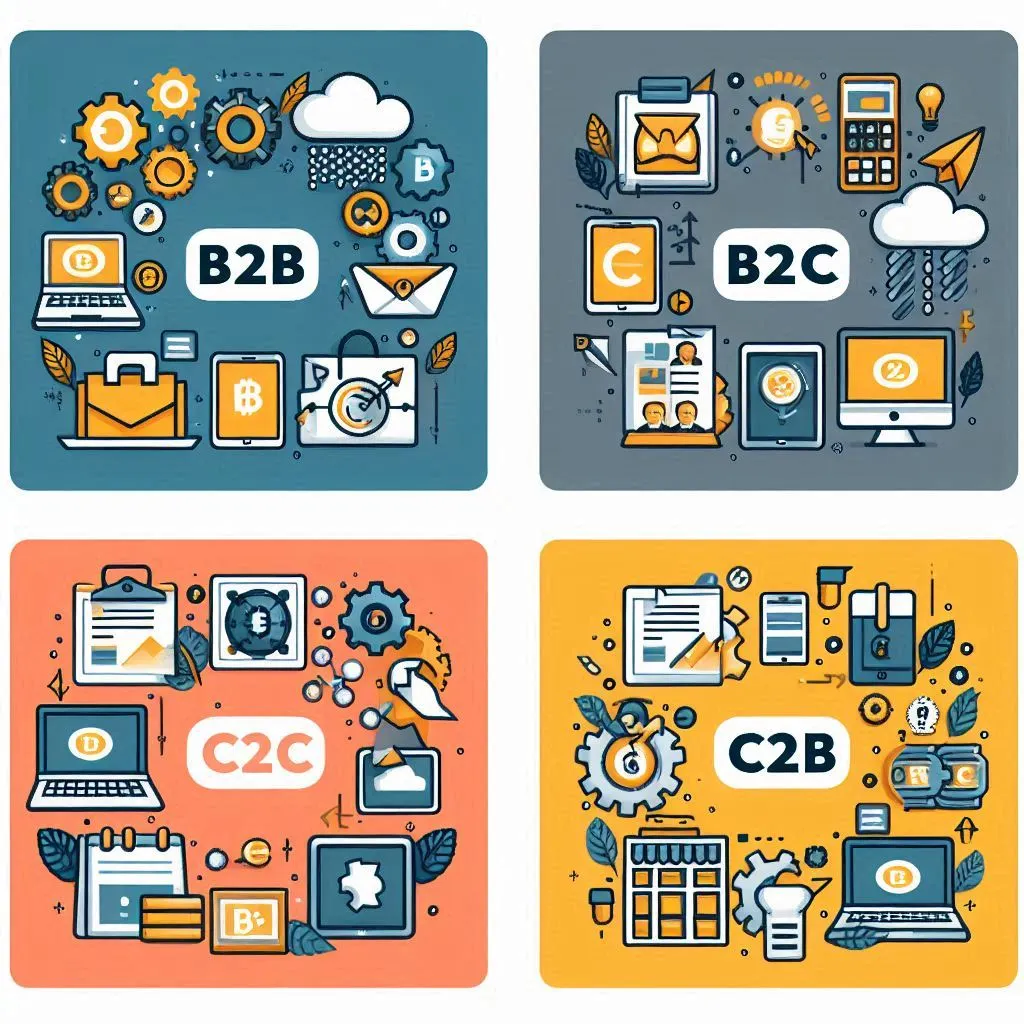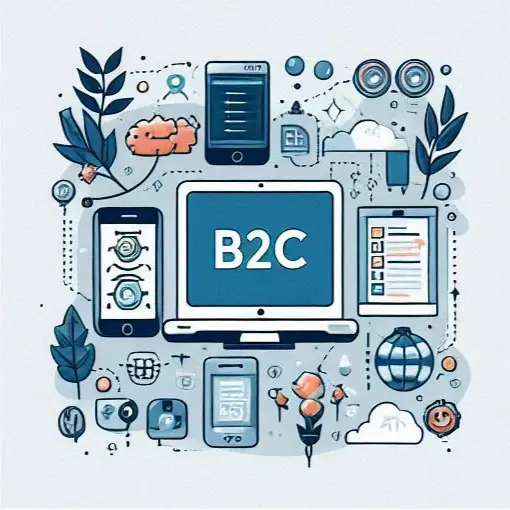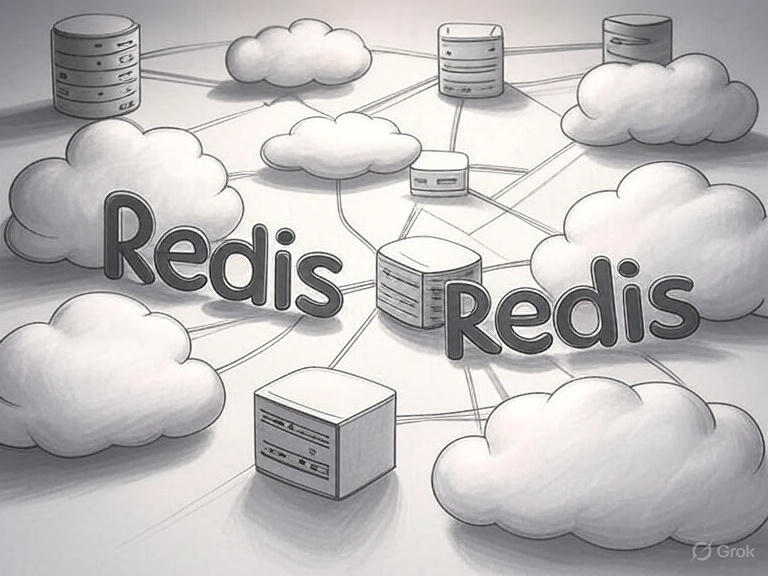Navigating today’s fast-paced digital world requires a solid grasp of the types of e-business models. For startups and small businesses, understanding these business models is essential for growth and success. Whether you’re just starting out or looking to expand, knowing the four primary e-business models can be a game-changer. This guide will explore each model in detail. It will help you identify the perfect fit for your business. It will also help you maximize its potential.
The importance of e-business models
Before we explore the specific types of e-business models, let’s briefly discuss why understanding these models is so important. E-business refers to the use of digital platforms to conduct business transactions over the internet. This includes selling products or services, marketing, and managing customer relationships, all through online channels.

For small businesses and startups, the digital marketplace offers unparalleled opportunities to reach new customers, streamline operations, and compete with larger companies on a more level playing field. However, to take full advantage of these opportunities, it’s essential to choose an e-business model that aligns with your business goals, resources, and market environment.
With that in mind, let’s explore what the four main types of e-business models are:
- Business-to-Business (B2B)
- Business-to-Consumer (B2C)
- Consumer-to-Consumer (C2C)
- Consumer-to-Business (C2B)
Business-to-business (B2B) e-business model

What is the B2B e-business model?
The Business-to-Business (B2B) e-business model involves transactions between two businesses. In this model, a company sells products, services, or solutions to another company rather than directly to consumers. B2B is a foundational element of the global supply chain, facilitating the flow of goods, services, and information across various industries.
B2B transactions can include everything from raw materials and components to software solutions and professional services. This e-business model is prevalent in industries such as manufacturing, wholesale distribution, and technology.
Examples of B2B e-business
One of the most well-known examples of a B2B platform is Alibaba, a global marketplace that connects manufacturers and wholesalers with businesses looking to purchase goods in bulk. Another example is Salesforce, a cloud-based software company that provides Customer Relationship Management (CRM) solutions to other businesses, helping them manage and analyze customer interactions and data.
Advantages of the B2B model for small businesses and startups
- Building long-term relationships:
One of the key advantages of the B2B model is the potential for building long-term, stable relationships with other businesses. These relationships often lead to repeat business and can provide a steady revenue stream. - Higher transaction values:
B2B transactions often involve larger order quantities and higher transaction values compared to B2C models. This can lead to significant revenue for small businesses, especially if they manage to secure contracts with large companies. - Specialization and niche markets:
B2B businesses can carve out specialized niches where they become the go-to supplier for certain products or services. This allows for more focused marketing efforts and can lead to a strong competitive advantage.
Challenges and considerations in the B2B model
- Longer sales cycles:
B2B transactions typically involve longer sales cycles compared to B2C. Decisions often require approval from multiple stakeholders within the purchasing company, which can delay the sales process. - Complex relationship management:
Maintaining relationships with other businesses requires a strong emphasis on customer service, relationship management, and negotiation skills. It’s essential to understand the needs of your business clients and to provide consistent value to keep them engaged. - Technology and integration:
B2B transactions often involve integrating systems between businesses, such as supply chain management software or CRM platforms. This requires a significant investment in technology and expertise to ensure smooth operations.
Business-to-consumer (B2C) e-business model

What is the B2C e-business model?
The Business-to-Consumer (B2C) e-business model is perhaps the most familiar to the general public. In this model, businesses sell products or services directly to individual consumers. The B2C model has revolutionized the retail industry, making it possible for consumers to shop for almost anything from the comfort of their own homes.
B2C businesses range from online retailers like Amazon to service providers like Netflix, offering everything from physical products to digital subscriptions.
Examples of B2C e-business
Amazon is a quintessential example of a B2C business. The platform allows consumers to purchase a vast array of products, from books to electronics, with just a few clicks. Another example is Zappos, an online shoe and clothing retailer known for its exceptional customer service.
Advantages of the B2C model for small businesses and startups
- Direct access to consumers:
The B2C model offers direct access to the end consumers of your products or services. This allows for more control over the customer experience and the ability to gather immediate feedback. - Scalability:
B2C businesses have the potential to scale rapidly, especially with the right marketing strategies and product offerings. The internet provides access to a global audience, allowing small businesses to reach customers far beyond their local markets. - Brand loyalty and engagement:
With the right approach, B2C businesses can build strong brand loyalty and customer engagement. Social media, email marketing, and other digital tools enable businesses to maintain a continuous relationship with their customers.
Challenges and considerations in the B2C model
- Intense competition:
The B2C marketplace is highly competitive, with many businesses vying for the attention of the same consumers. Differentiating your brand and products is essential to stand out from the crowd. - Price sensitivity:
Consumers in the B2C market are often highly price-sensitive, especially when comparing similar products across different platforms. This can lead to margin pressure and the need for aggressive pricing strategies. - Marketing and customer service:
Effective marketing and excellent customer service are critical to success in the B2C model. Businesses must invest in building a strong online presence, optimizing their websites, and ensuring a seamless user experience.
Consumer-to-consumer (C2C) e-business model

What is the C2C e-business model?
The Consumer-to-Consumer (C2C) e-business model involves transactions between consumers, usually facilitated by a third-party platform. This model has gained popularity with the rise of the sharing economy and peer-to-peer marketplaces.
C2C platforms allow individuals to sell products or services directly to other individuals. The platform typically earns revenue by charging fees or taking a commission on each transaction.
Examples of C2C e-business
eBay is one of the earliest and most well-known C2C platforms, allowing individuals to buy and sell a wide range of goods through online auctions or fixed-price listings. Etsy is another popular C2C platform, focusing on handmade, vintage, and unique items, providing a marketplace for artisans and creators.
Advantages of the C2C model for small businesses and startups
- Low barriers to entry:
The C2C model offers a low-cost way for individuals to start selling products or services. Platforms like eBay and Etsy provide the infrastructure, reducing the need for significant upfront investment. - Niche markets and unique products:
C2C platforms often attract sellers with unique or niche products that might not be available through traditional retail channels. This allows small businesses and individuals to cater to specific markets with tailored offerings. - Flexible business opportunities:
C2C businesses can be run on a part-time or full-time basis, offering flexibility for entrepreneurs. This model is ideal for those looking to test the market with minimal risk.
Challenges and considerations in the C2C model
- Dependence on third-party platforms:
One of the main challenges of the C2C model is the dependence on third-party platforms. These platforms control the marketplace, set the rules, and often charge fees that can eat into profits. - Competition among sellers:
With many sellers offering similar products, competition can be fierce. Success often depends on the ability to differentiate products, maintain high customer satisfaction, and manage competitive pricing. - Quality control and trust:
Ensuring product quality and building trust with buyers are critical in the C2C model. Negative reviews or disputes can damage a seller’s reputation and impact future sales.
Consumer-to-business (C2B) e-business model

What is the C2B e-business model?
The Consumer-to-Business (C2B) e-business model is the reverse of the traditional B2C model. In this model, individual consumers offer products or services to businesses. This model has gained traction with the growth of the gig economy, where freelancers and independent contractors provide services to businesses on a project or task basis.
The C2B model is commonly used in industries like digital marketing, content creation, graphic design, and software development.
Examples of C2B e-business
Upwork is a leading C2B platform that connects freelancers with businesses seeking services ranging from writing and design to software development and marketing. Fiverr is another popular C2B platform where freelancers offer a variety of services, often at competitive prices.
Advantages of the C2B model for small businesses and startups
- Access to specialized talent:
The C2B model provides businesses with access to a diverse pool of specialized talent. Small businesses can tap into the expertise of freelancers without the need for full-time hires, allowing for greater flexibility and cost savings. - Project-based flexibility:
C2B allows businesses to engage freelancers on a project basis, enabling them to scale their workforce up or down as needed. This is particularly beneficial for startups that may have fluctuating workloads. - Cost-effective solutions:
Freelancers often offer competitive rates compared to traditional agencies or full-time employees. This can be a cost-effective way for small businesses to access high-quality services.
Challenges and considerations in the C2B model
- Quality control:
Managing the quality of work delivered by freelancers can be challenging. It’s essential to establish clear expectations and maintain regular communication to ensure that deliverables meet business standards. - Dependency on freelancers:
Relying on freelancers can lead to potential challenges, such as availability issues or inconsistent work quality. Businesses must have contingency plans in place to address these risks. - Intellectual property and confidentiality:
When working with freelancers, it’s important to address intellectual property rights and confidentiality agreements to protect business interests.
Choosing the right e-business model for your small business or startup
Assessing your business needs
Choosing the right e-business model starts with a thorough assessment of your business needs, goals, and resources. Here are some key questions to consider:
- What is the nature of your product or service?
Understanding whether your offering is best suited for other businesses, individual consumers, or a combination of both will guide your model choice. - Who is your target audience?
Identifying your target audience’s demographics, behaviors, and preferences is crucial in determining the most effective way to reach them. - What are your growth objectives?
Consider whether you aim to scale quickly, build long-term relationships, or focus on a niche market. Your growth strategy will influence the best model for your business.
Hybrid models and flexibility
It’s important to note that businesses don’t have to limit themselves to just one e-business model. Many successful companies operate using a hybrid approach that combines elements of multiple models. For example, a company might operate primarily as a B2B business but also sell directly to consumers through a B2C channel.
Exploring hybrid models can provide greater flexibility and help you capture a broader market share. However, it’s essential to manage each channel effectively to avoid diluting your brand or overextending your resources.
Case studies of successful small businesses using each model
- B2B example: Slack
Slack started as a tool for internal communication within companies but quickly scaled by focusing on business clients. By offering a product that solved a significant pain point for companies of all sizes, Slack was able to build a large customer base and become a leading B2B platform. - B2C example: Warby Parker
Warby Parker disrupted the eyewear industry by offering affordable, stylish glasses directly to consumers online. Their innovative home try-on program and strong brand identity helped them build a loyal customer base and scale rapidly. - C2C example: Poshmark
Poshmark is a C2C platform that allows individuals to sell new and used clothing directly to other consumers. By creating a community-driven marketplace, Poshmark has grown into a leading platform for fashion resale. - C2B example: Toptal
Toptal is a C2B platform that connects companies with top freelance talent in fields like software development and design. By vetting their freelancers and focusing on high-quality talent, Toptal has become a trusted resource for businesses seeking specialized services.
Actionable steps for implementing the chosen model
- Research and planning:
Begin with thorough research on your chosen model, understanding its dynamics, key players, and potential challenges. Develop a detailed business plan outlining how you will implement the model and achieve your goals. - Technology and infrastructure:
Invest in the necessary technology and infrastructure to support your e-business model. This could include e-commerce platforms, CRM systems, payment gateways, and marketing automation tools. - Marketing and customer acquisition:
Develop a strong marketing strategy to attract and retain customers. Focus on building a robust online presence through SEO, social media, content marketing, and paid advertising. - Customer service and support:
Prioritize customer service to build trust and loyalty. Ensure that you have the systems and processes in place to handle inquiries, orders, and support requests efficiently. - Continuous improvement:
Monitor your performance and be open to making adjustments. Use analytics and customer feedback to refine your approach and optimize your operations over time.
Conclusion
Understanding what the four main types of e-business models are — B2B, B2C, C2C, and C2B — is essential for small business owners and startups looking to succeed in the digital marketplace. Each model offers unique advantages and challenges, and the right choice will depend on your business’s specific needs and goals.
By carefully evaluating your options and being open to hybrid approaches, you can leverage these models to grow your business, reach new customers, and achieve long-term success. The key is to stay informed, be adaptable, and continually seek out opportunities to innovate and improve.
Call to action
Digg deeper into eBusiness with my articles on:
- What is the difference between a business model and an eBusiness model?
- What is the best way to measure a company’s eBusiness success?
- What is an e-Business Consultant? The Key Role to Digital Success
- How an eBusiness Consultant Can Upgrade Your Business
eCommerce Related articles:
- How To: Cart Abandonment Google Analytics Setup
- Cart Abandonment: Top 5 reasons your customers are leaving their cart!
- Maximize Profits: Insider Tips on eCommerce Personalization Strategies
- How to Build Your eCommerce Strategy: Proven Approaches for Success
If you’re ready to dive deeper into e-business strategy or need help choosing the right model for your business, don’t hesitate to reach out. Share your thoughts or experiences in the comments below, and let’s continue the conversation on how small businesses can thrive in the digital age.



6 comments on “What are the four main types of e-Business models?”